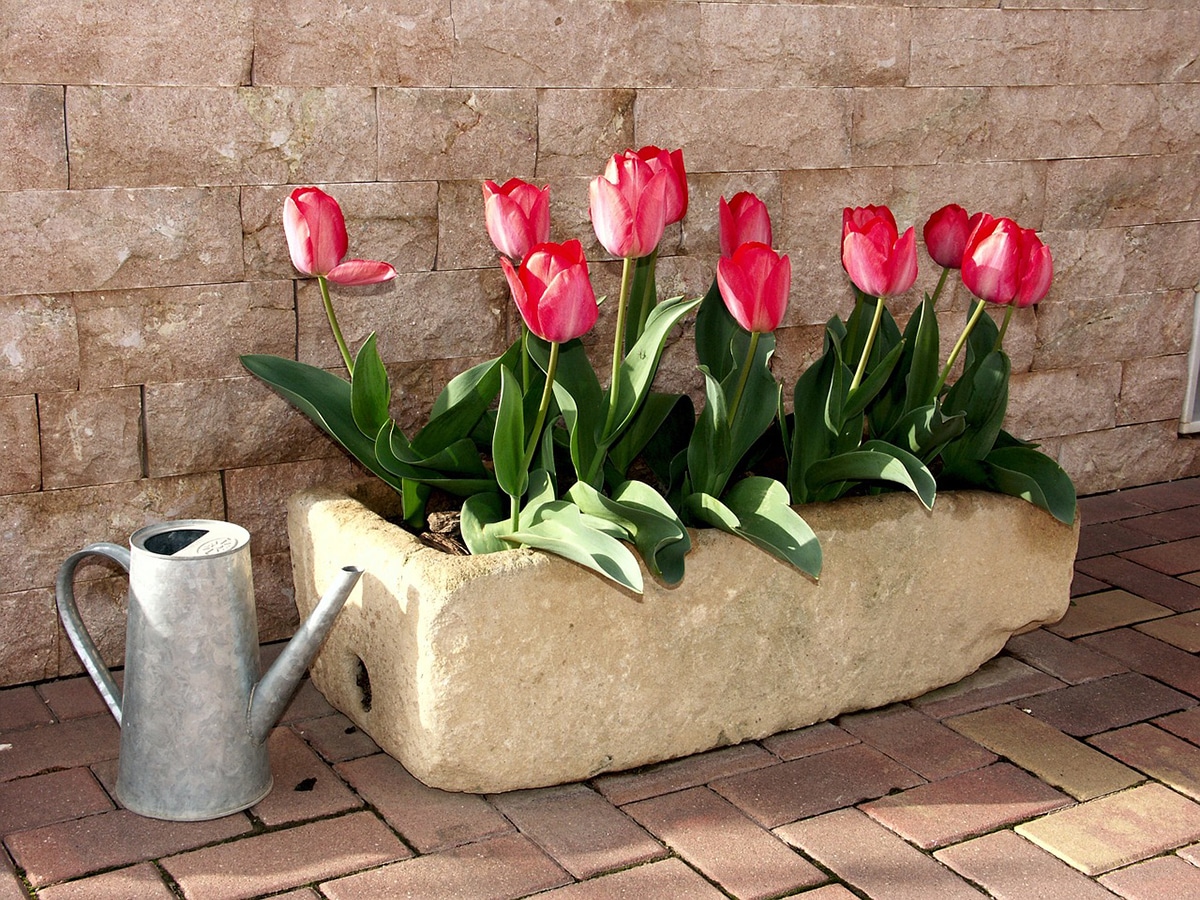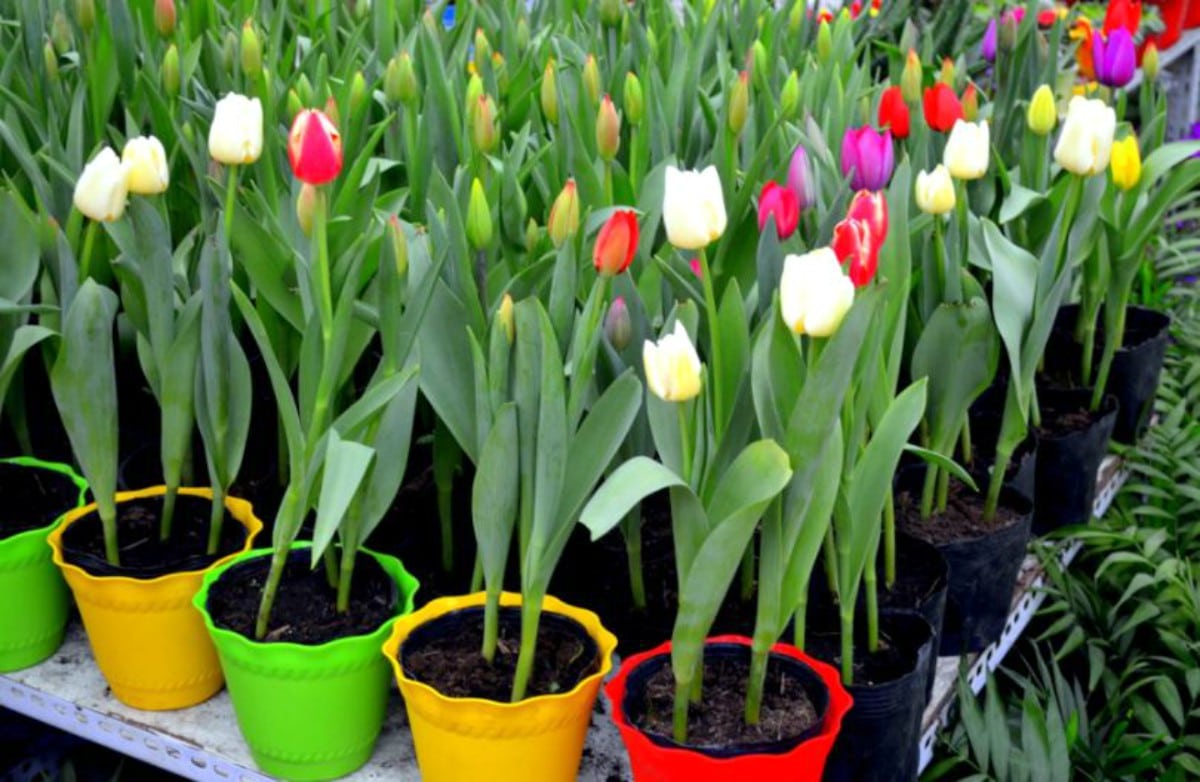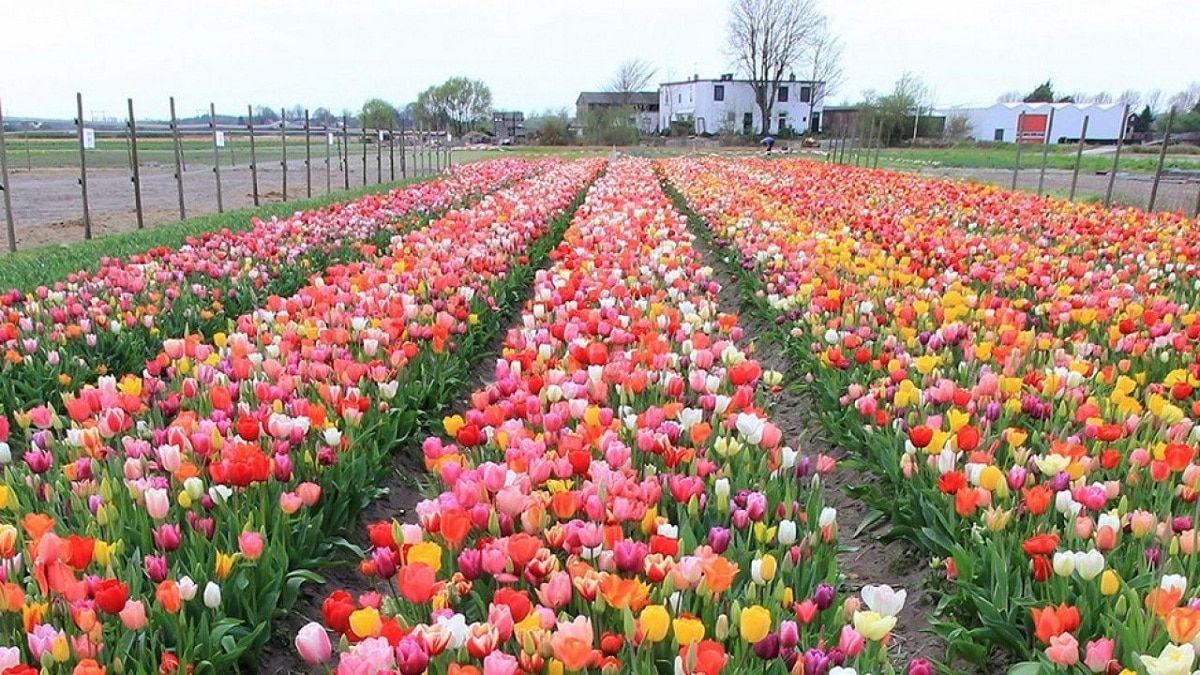
Tulips are quite in demand in the world of gardening and many people want to learn how to plant a cultivar. The doubt of many people is when are tulips planted since it has to be at the time of the year where it is most favorable for their correct development.
In this article we are going to tell you when tulips are planted and what are the main care that we must give them.
When are tulips planted?

In general terms, tulip bulbs can be sown from 6 months to half a year. However, the best time to plant tulips is in the fall, which can be done from September to January in the Northern Hemisphere. In fact, it is very important to remember that you have to sow when it is not too hot, but always before the frost begins.
This time is the most favorable time for tulip bulbs to grow, but if planted early, the temperature is too high, the soil is too hot, or frost has formed after this, the bulbs will not develop or do very little. . This way they will grow better and the tulips will bloom between April and May. Now that you know when to plant tulips in the northern hemisphere, let's talk about the southern hemisphere, since you know that the months change with the seasons.
If you're wondering when tulips are planted in the southern hemisphere, keep in mind that the best time to plant tulip bulbs is also in the fall, as this is generally the best temperature for bulbs to grow. Nevertheless, As far as the south is concerned, autumn is more or less from March to May. It is best to plant tulip bulbs no later than early April to late June. In this way, they will bloom in September and October.
Some recommendations about tulips

Buying locally grown bulbs is recommended, as imported bulbs may require additional cycles and will not complete bloom in all locations. Remember, you should not water if it rains every week. However, if there is a dry spell and therefore no rain, you should water the bulbs weekly until the soil is rain-wet again.
Remember that rainy summers, irrigation systems and wet soil are the death of tulips. The soil must contain organic matter, although not in excess. That's why, if the terrain does not have it, you can always add a little. It is important to add crushed pine bark, sand, or any other coarse material to the soil to promote rapid drainage.
When the flower dries, you need to cut it off, leaving behind the leaves. Beyond that, we should add that when the leaves dry out, it's time to dig up the bulb and store it until next fall, when you'll need to replant it to grow tulips again.
Most tulips need a "cold period" of at least 12 to 14 weeks to produce beautiful flowers. This makes it difficult to grow tulips in hot tropical climates. The cold period is usually given by nature and is when the ground temperature drops below 55 degrees.
On the other hand, on hot days when the ground temperature doesn't drop low enough, i.e. below 55 degrees, you can trick the bulbs into thinking they've had a cold winter underground. This is another option when growing tulips.
tulips like plant them in cool soil (32-55 degrees) so they can take root. It takes 4-6 weeks for the roots to grow sufficiently, and once they take root, they are ready for the warm spring temperatures.
In areas where the ground temperature does not drop below 60 degrees, a refrigerator or freezer can be used (40-50 degrees) to help develop a healthy root system. On the other hand, if you don't have a freezer, I recommend growing your tulips in pots and then storing them in the refrigerator for 4-6 weeks.
I recommend that you grow your tulips in partial or full shade. Bulbs should always be 6-8 inches deep and covered with 2 inches of soil to help retain moisture and keep bulbs cool.
Tulips also do well in midday sun and under deciduous trees. In hot climates, the flowers will last longer if they are shaded from the afternoon sun. Tulip bulbs are susceptible to fungal diseases, especially when grown in cool, humid weather.
For best results, simply remove the bulbs after they have flowered and plant new bulbs each fall. Tulips also go well with other flowers such as daffodils, hyacinths, and crocuses. You can use this as a good suggestion for possible flower arrangements.
If you prefer a variety with a different flowering time, simply remove the bulbs after they have flowered and replant at a different time each fall to extend the blooming season. Remember, there are many varieties of tulips to choose from. Some have single flowers, some have double flowers.
When are potted tulips planted?

Now that you know when tulips are planted, let's talk about some tips on how to grow tulips in a pot:
- When you choose to buy a tulip bulb, make sure it's a bit firm and consistent to the touch, with a thin skin, like an onion. If you find something wrinkled or soft, do not pick it up as it will not be in good condition.
- To break the dormancy of the bulbs and allow them to start growing, it is important to chill them before planting.
- It is preferable to buy tulip bulbs grown in the area where you live or in the same country, as imported tulip bulbs from other places in other climates may have different cycles. In this case, they will not grow well and will not bloom outside the site.
- It needs cool soil to thrive, so a good time to plant it is when the soil temperature is stable and below 15°C.
- This type of bulb does not do well in the ground for long periods of time. For this reason, we recommend planting it within the same week of purchase.
- When you go to plant them, dig holes in the ground three times the height of each bulb.
I hope that with this information you can learn more about when tulips are planted.